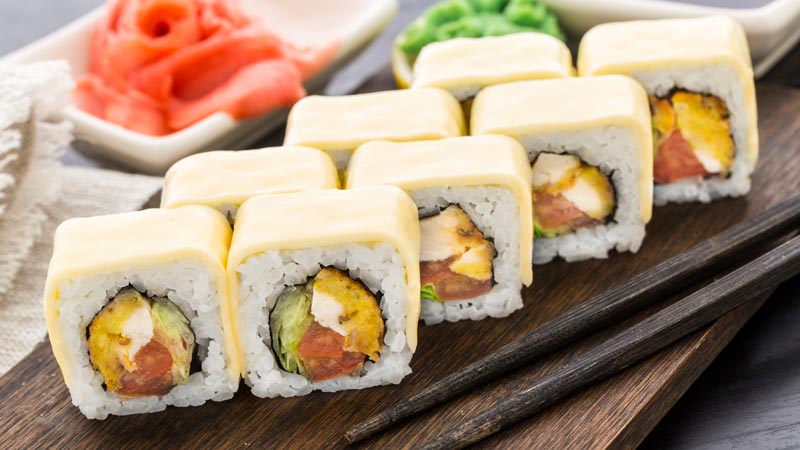Fusion Food
A Brief Summary Explanation of Fusion Cooking
Fusion cooking (like the Seared Sea Scallops on BLT Salad pictured above) is often a very much maligned and entirely misunderstood concept. The word, “Fusion,” is most commonly applied to the act of combining two substances or items together, very often by the application of heat. This can relate to anything from nuclear fusion – the process where two or more nuclei are fused to form one, larger nucleus – to the fusion of two metals to form an alloy, to the fusion of two ideas to form an entirely different principle. It is this third example of fusion to which fusion cooking relates and essentially the marriage of one or more cooking traditions, techniques or disciplines to form an altogether different approach or finished dish. It most definitely does not mean putting all the ingredients selected for a dish in to one pot and turning the heat up as high as possible!
Fusion Cooking Recipes and Techniques
- Asian and Chinese Fusion Recipes – Asian Ingredients and Chinese Cuisine in fusion recipes
Asian ingredients frequently show up in fusion dishes. Learn more about Asian fusion dishes, and try some recipes. - Fusion Cooking Recipe
A wide selection of fusion cooking recipes, usually locally sourced ingredients. - Fusion Recipes: East Meets West
Thai fusion cooking concepts and recipes.
What is the Point of Fusion Cooking?
Fusion cooking can be employed for a great many different reasons. It is a technique which may be used by chefs in order to expand their culinary repertoire and afford them a dish which is truly unique and distinct from those offered by their peers and competitors. Alternatively, fusion cooking may be practised by a chef or cook from more than one cultural background, looking to inject their own unique identity in to their cuisine. Fusion cooking can even be employed as a means of subtly introducing new food concepts to the masses. One incredibly simple example of this is the Chinese takeaways in the UK attempting to target the, “Fish and chip,” traditionalists.
Fusion Cooking – Conclusion and Top Tips
Although fusion cooking became fashionable and ostensibly popular during the 1970s, the simple reality is that fusion cooking has been around for millennia. Ever since the earliest migrations of human beings, who carried their cooking knowledge and techniques with them to far off lands, cooking has been subjected to an amalgamation of techniques and adapted to suit the availability of ingredients in those new lands. This means that almost every dish which we can conceive of is the result of the principals of fusion cooking at some stage in human development and that the practice is by no means a 20th Century invention.
When we are contemplating fusion cooking, there are some top tips which should always be borne in mind:
- Know your ingredients. Be aware of how each ingredient requires to be cooked and how its taste is likely to compliment or otherwise that of the other ingredients to be incorporated in the dish.
- Know intimately the procedures required to be applied to the chosen cooking method. Do not attempt elaborate, stir fried fusion cooking where you are unfamiliar with the stir frying process.
- Know a little bit of restraint. Cooking is an art form in many respects but this does not mean that a chef has quite the same level of freedom as an artist has with his brush. “That sounds like a novel idea!” does not necessarily mean that it will be a good idea. “Sauteed Garlic Mushrooms with Passion Fruit Syllabub,” certainly sounds extremely exotic – would you actually like to eat it? The first and most important step in fusion cooking – or any form of speculative cooking – is rational thought and planning.
- Do not attempt a new form of fusion cooking when hosting an important dinner party. Fusion cooking recipes should be prepared in the first instance only for one’s own consumption – or perhaps that of one’s extremely patient, close family!
Copyright © 2018 Hasnain Zaki. All Rights Reserved.











